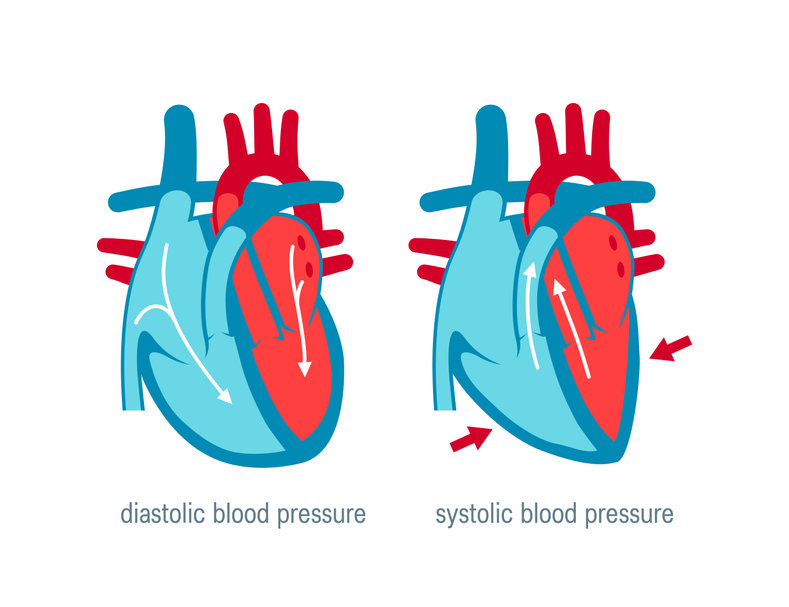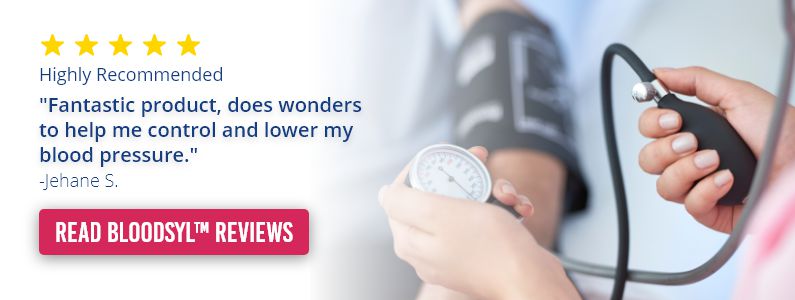When it comes to your overall health, blood pressure plays a pivotal role in managing the proper functioning of your cardiovascular system. The health of your heart is impacted by a variety of other factors, including cholesterol and blood sugar levels. However, blood pressure is one of the most important influences on heart health. Its management is extremely important as high blood pressure levels can lead to health conditions such as hypertension (1) and low blood pressure levels can lead to hypotension (2).
In this article, we will outline blood pressure in more detail, highlight how it is measured in relation to diastolic and systolic values, and provide helpful tips to help you maintain your blood pressure for a healthy heart.
>>> Click Here To Discover Why Customers Are Raving About Bloodsyl™!
What Is Blood Pressure?

According to Jennifer Wong, M.D., a cardiologist and medical director, blood pressure simply refers to the force of your blood against the walls of your blood vessels (3). Wong and other health professionals pinpoint blood pressure levels using two key measures; diastolic and systolic values. Wong further elaborates that “the systolic blood pressure is the peak pressure during a heartbeat while the heart is ‘squeezing,’ and the diastolic blood pressure is the lowest pressure between two beats while the heart is ‘relaxed”. The assessment of both values is critical to accurately determining one’s blood pressure and then making informed decisions regarding the maintenance of these levels.
How Is Your Blood Pressure Measured?
In order to measure blood pressure and receive the diastolic and systolic values associated with blood pressure readings, doctors use a device that you may already be familiar with. The device, known as a sphygmomanometer or blood pressure monitor, is an inflatable material cuff that is wrapped around the upper arm (4). The gauging device compresses the brachial artery and then slowly releases the tension. Wong explains that “when the cuff’s pressure equals the systolic pressure, blood begins to flow past the cuff, creating the Korotkoff sounds of blood flow turbulence that can be heard with a stethoscope.” It is this process that allows medical professionals to measure your blood pressure through the assessment of diastolic and systolic values.

What Do Diastolic Values Actually Measure?
Diastolic blood pressure values refer to the pressure exerted by your blood against the artery walls while the heart rests between beats (5). This value allows medical practitioners to make assessments regarding an individual’s blood pressure according to the following key figures and readings:
- Lower than 80 – normal diastolic blood pressure levels
- 80 – 89 – stage 1 hypertension
- 90 or more – stage 2 hypertension
- 120 or more – hypertensive crisis
It is important to note that readings may show normal diastolic blood pressure levels, however, extreme systolic values shown during the same measurement could indicate elevated blood pressure. It is for this reason that doctors pay particular attention to the systolic values alongside the above-mentioned diastolic values.
What Do Systolic Values Actually Measure?
Systolic blood pressure values refer to the pressure exerted by your blood against the artery walls while the heart is beating (6). These values are critical in the assessment of one’s blood pressure as this measurement typically rises with age due to improper functioning of arteries with time, the sustained buildup of plaque in the body, and increased risk of cardiovascular disease. The following key figures and readings are used to assess one’s systolic blood pressure:
- Below 120 – normal systolic blood pressure levels
- 120 – 129 – elevated systolic blood pressure levels
- 130 – 139 – stage 1 hypertension
- 140 or more – stage 2 hypertension
- 180 or more – hypertensive crisis
The assessment of both readings is crucial to making an informed assessment of one’s blood pressure. While it is possible for individuals to purchase a blood pressure monitor and keep track of their levels, it is always advised to seek out the assistance of a trained professional before making any rash decisions regarding their blood pressure.
How To Prevent High Blood Pressure
In order to help you prevent high blood pressure, you should make healthy lifestyle changes that are safe and beneficial whether you have gone to see your health practitioner or not. These changes are the basic activities that you can do to protect your heart health, and the following list will inform your lifestyle habits to minimize the risks associated with high blood pressure:
Supplement Your Diet Safely
It is wise to consult your health practitioner if you are concerned about your blood pressure levels, however, there are a series of safe and healthy ways to adjust your dietary habits before you go see your doctor. The most critical step is supplementing your diet with a natural, beneficial, and toxin-free nutrition formula designed by a reliable and trustworthy supplement manufacturer. The go-to blood pressure supplement on the market is Bloodsyl™ by Approved Science® as it contains a series of helpful, natural ingredients that do not present any adverse side effects or associated health risks. Read customer reviews about Bloodsyl™ to learn how this supplement helps people achieve their health goals.
Adjust Your Diet Accordingly
Beyond taking nutritious supplements, individuals should make adjustments to their diet in order to avoid elevated blood pressure as well as balance levels when suffering from high blood pressure. From cutting out sugar and replacing it with natural, healthy sugar alternatives to avoiding excessive consumption of red meat, here are some of the best dietary adjustments to minimize the risks of high blood pressure:
- Increase your intake of potassium by eating more cooked spinach, broccoli, sweet potatoes, and bananas, as potassium counteracts high sodium levels in the body that would otherwise contribute to high blood pressure.
- Avoid foods that are high in saturated fats such as pastries, fatty meat, processed meat, and butter, as these foods raise blood cholesterol levels which in turn impacts your blood pressure.
- Eat more foods that are high in protein and essential omega fatty acids, such as lean fish, nuts, and legumes, as they decreased triglycerides and lower blood pressure.
Exercise Regularly
It is important to exercise regularly as frequent movement and activity promote the proper functioning of all major systems in the body as well as supporting critical parts of the body, such as the knees. From your respiratory system to your cardiovascular system, the health benefits of exercise are holistic. This is especially true with regards to blood pressure levels as frequent exercise opens your arteries and provides your blood with more oxygen for improved heart health. Frequent exercise also strengthens the heart as the muscle is encouraged to beat faster for longer periods of time and, as a result, the force of blood against your arteries decreases. This is just one of the many benefits of frequent exercise, and you can enjoy them by starting light with a short walk each day and progressing at your own pace.
Your Takeaway

From supporting your lifestyle with a dedicated healthy supplement to exercising regularly, you can promote better blood pressure levels and maintain appropriate diastolic and systolic values in your blood monitor readings. This is crucial if you wish to live a long and happy life with proper cardiovascular functioning.


